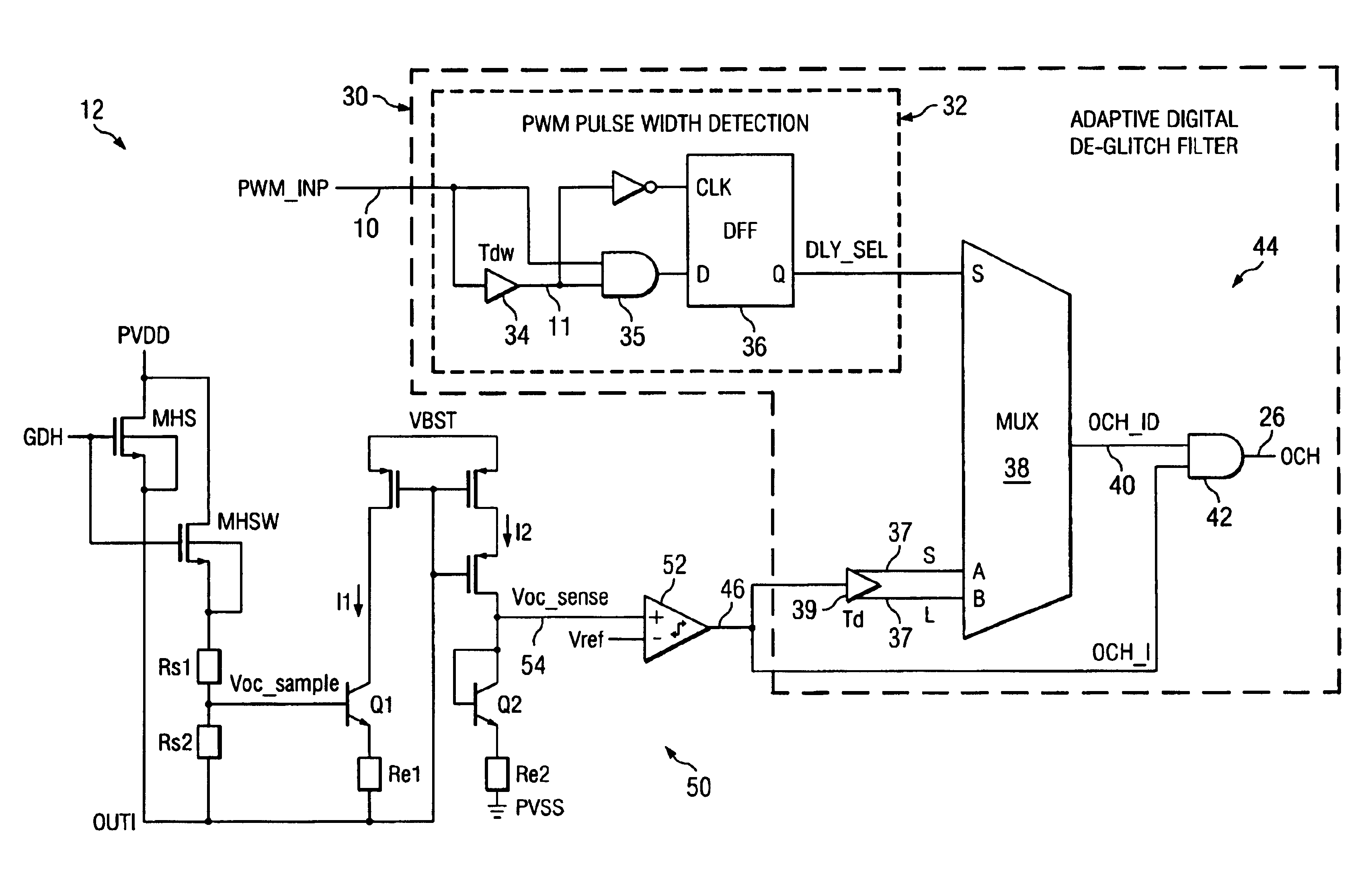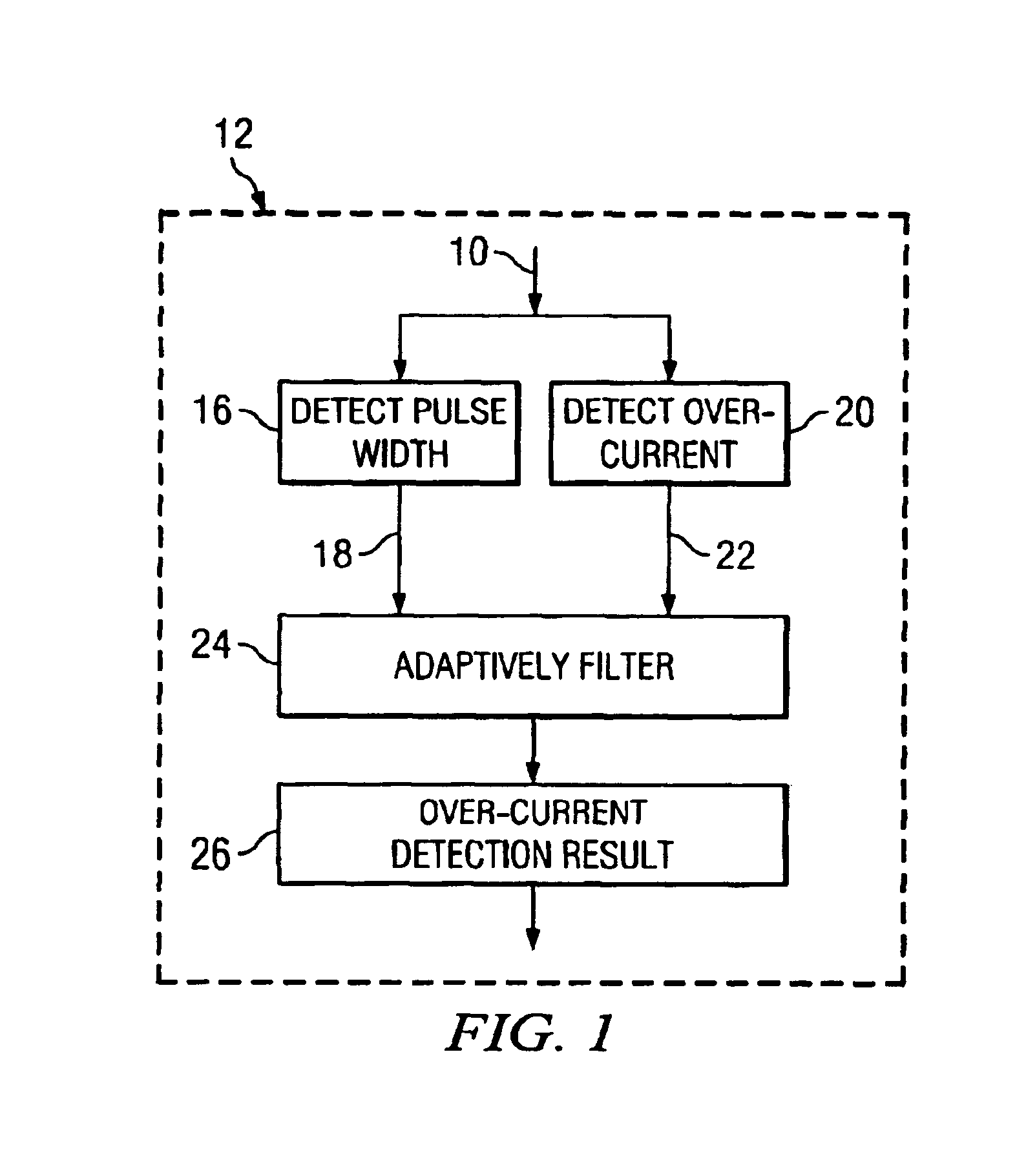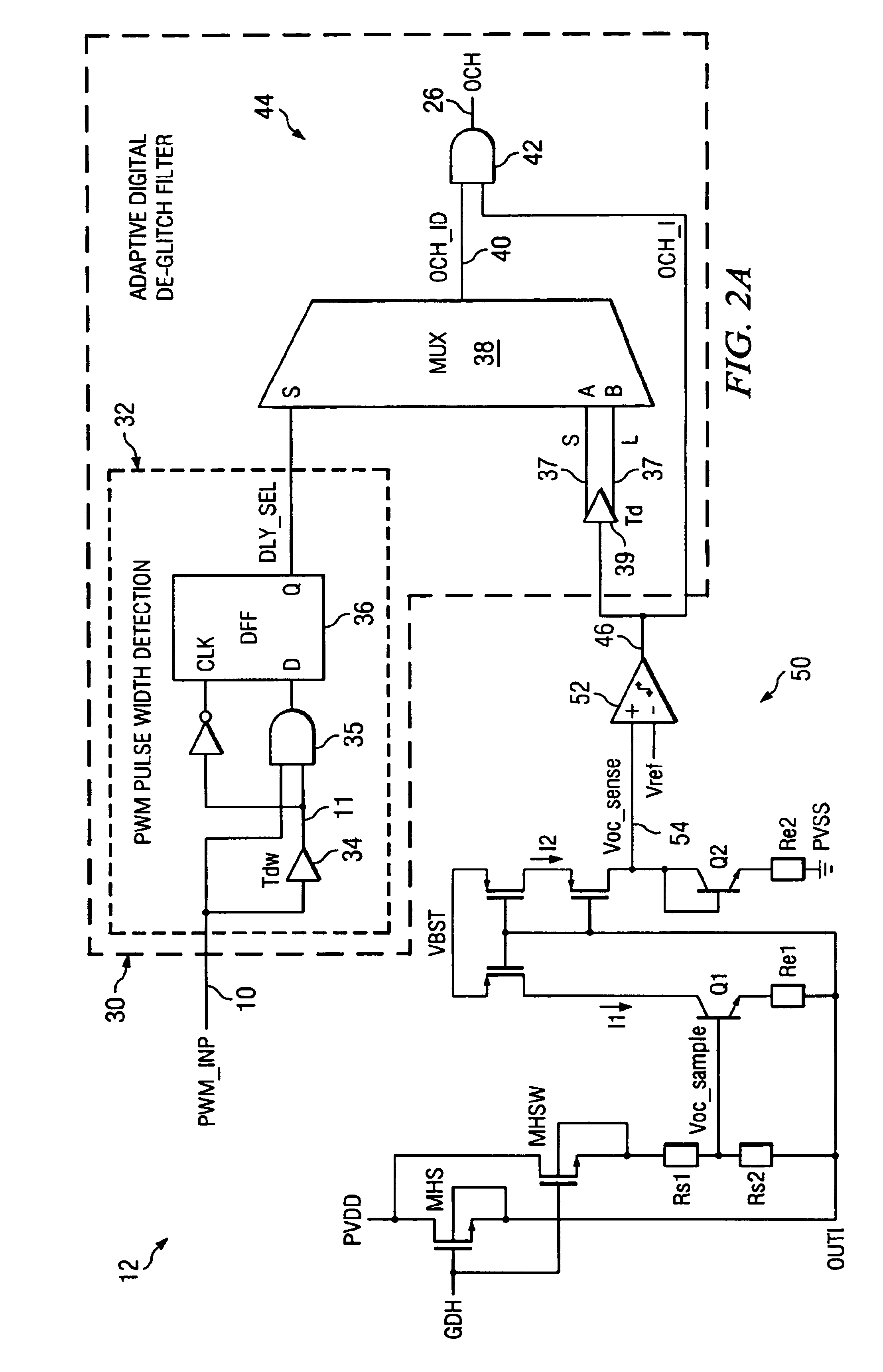Adaptive over-current detection
a technology of over-current detection and over-current, applied in the direction of emergency protective arrangements for limiting excess voltage/current, power conversion systems, electrical appliances, etc., can solve the problems of difficult and reliable detection of the presence of over-current (oc), on which circuit protection relies, and many problems in the detection of over-current, so as to improve the accuracy of over-current detection and reduce the chip area , the effect of low susceptibility to nois
- Summary
- Abstract
- Description
- Claims
- Application Information
AI Technical Summary
Benefits of technology
Problems solved by technology
Method used
Image
Examples
Embodiment Construction
[0021]In general, the preferred embodiments of the invention provide over-current protection solutions particularly useful for PWM power stages. Referring first primarily to the process flow diagram of FIG. 1, a PWM signal 10 in a PWM switching circuitry 12 is monitored. The pulse width of the PWM signal 10 is detected, as shown at step 16. As indicated by arrow path 18, the pulse width is subsequently used to adaptively filter 24 out the noises in any detected over-current condition. Over-current conditions are detected as shown at step 20. An indication of a detected over-current condition, shown by arrow path 22, is provided. At step 24, the over-current indication 22 is adaptively filtered. It should be noted that the adaptive filtering is performed in step 24 by eliminating false over-current indications in 22. This is preferably accomplished by means of eliminating over-current indications 22 for events shorter than a propagation delay selected based upon the determination of ...
PUM
 Login to View More
Login to View More Abstract
Description
Claims
Application Information
 Login to View More
Login to View More - R&D
- Intellectual Property
- Life Sciences
- Materials
- Tech Scout
- Unparalleled Data Quality
- Higher Quality Content
- 60% Fewer Hallucinations
Browse by: Latest US Patents, China's latest patents, Technical Efficacy Thesaurus, Application Domain, Technology Topic, Popular Technical Reports.
© 2025 PatSnap. All rights reserved.Legal|Privacy policy|Modern Slavery Act Transparency Statement|Sitemap|About US| Contact US: help@patsnap.com



